Related Research Articles
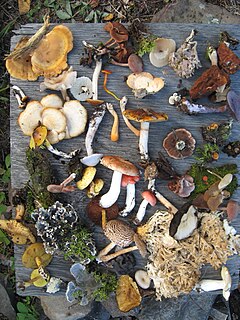
Biodiversity or biological diversity is the variety and variability of life on Earth. Biodiversity is a measure of variation at the genetic, species, and ecosystem level.
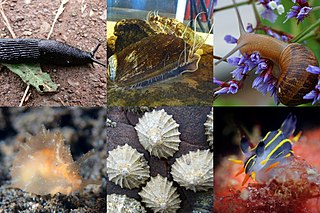
The gastropods, commonly known as snails and slugs, belong to a large taxonomic class of invertebrates within the phylum Mollusca called Gastropoda.

The benthic zone is the ecological region at the lowest level of a body of water such as an ocean, lake, or stream, including the sediment surface and some sub-surface layers. The name comes from ancient Greek, βένθος (bénthos), meaning "the depths." Organisms living in this zone are called benthos and include microorganisms as well as larger invertebrates, such as crustaceans and polychaetes. Organisms here generally live in close relationship with the substrate and many are permanently attached to the bottom. The benthic boundary layer, which includes the bottom layer of water and the uppermost layer of sediment directly influenced by the overlying water, is an integral part of the benthic zone, as it greatly influences the biological activity that takes place there. Examples of contact soil layers include sand bottoms, rocky outcrops, coral, and bay mud.

An abyssal plain is an underwater plain on the deep ocean floor, usually found at depths between 3,000 metres (9,800 ft) and 6,000 metres (20,000 ft). Lying generally between the foot of a continental rise and a mid-ocean ridge, abyssal plains cover more than 50% of the Earth's surface. They are among the flattest, smoothest, and least explored regions on Earth. Abyssal plains are key geologic elements of oceanic basins.

The seabed is the bottom of the ocean. All floors of the ocean are known as 'seabeds'.
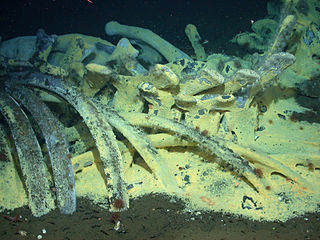
A whale fall occurs when the carcass of a whale has fallen onto the ocean floor at a depth greater than 1,000 m (3,300 ft), in the bathyal or abyssal zones. On the sea floor, these carcasses can create complex localized ecosystems that supply sustenance to deep-sea organisms for decades. This is unlike in shallower waters, where a whale carcass will be consumed by scavengers over a relatively short period of time. Whale falls were first observed in the late 1970s with the development of deep-sea robotic exploration. Since then, several natural and experimental whale falls have been monitored through the use of observations from submersibles and remotely operated underwater vehicles (ROVs) in order to understand patterns of ecological succession on the deep seafloor.
The hadal zone, also known as the hadopelagic zone, is the deepest region of the ocean, lying within oceanic trenches. The hadal zone ranges from around 6 to 11 km below sea level, and exists in long, narrow, topographic V-shaped depressions.
The deep sea or deep layer is the lowest layer in the ocean, existing below the thermocline and above the seabed, at a depth of 1,000 fathoms or more. Little or no light penetrates this part of the ocean, and most of the organisms that live there rely for subsistence on falling organic matter produced in the photic zone. For this reason, scientists once assumed that life would be sparse in the deep ocean, but virtually every probe has revealed that, on the contrary, life is abundant in the deep ocean.

The Census of Marine Life was a 10-year, US $650 million scientific initiative, involving a global network of researchers in more than 80 nations, engaged to assess and explain the diversity, distribution, and abundance of life in the oceans. The world's first comprehensive Census of Marine Life — past, present, and future — was released in 2010 in London. Initially supported by funding from the Alfred P. Sloan Foundation, the project was successful in generating many times that initial investment in additional support and substantially increased the baselines of knowledge in often underexplored ocean realms, as well as engaging over 2,700 different researchers for the first time in a global collaborative community united in a common goal, and has been described as "one of the largest scientific collaborations ever conducted".
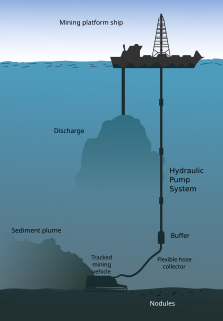
Deep sea mining is a growing subfield of experimental seabed mining that involves the retrieval of minerals and deposits from the ocean floor found at depths of 200 meters or greater. As of 2021, the majority of marine mining efforts are limited to shallow coastal waters only, where sand, tin and diamonds are more readily accessible. There are three types of deep sea mining that have generated great interest: polymetallic nodule mining, polymetallic sulphide mining, and the mining of cobalt-rich ferromanganese crusts. The majority of proposed deep sea mining sites are near of polymetallic nodules or active and extinct hydrothermal vents at 1,400 to 3,700 metres below the ocean’s surface. The vents create globular or massive sulfide deposits, which contain valuable metals such as silver, gold, copper, manganese, cobalt, and zinc. The deposits are mined using either hydraulic pumps or bucket systems that take ore to the surface to be processed.
The Future of Marine Animal Populations (FMAP) project was one of the core projects of the international Census of Marine Life (2000–2010). FMAP's mission was to describe and synthesize globally changing patterns of species abundance, distribution, and diversity, and to model the effects of fishing, climate change and other key variables on those patterns. This work was done across ocean realms and with an emphasis on understanding past changes and predicting future scenarios.
The Census of Marine Zooplankton is a field project of the Census of Marine Life that has aimed to produce a global assessment of the species diversity, biomass, biogeographic distribution, and genetic diversity of more than 7,000 described species of zooplankton that drift the ocean currents throughout their lives. CMarZ focuses on the deep sea, under-sampled regions, and biodiversity hotspots. From 2004 until 2011, Ann Bucklin was the lead scientist for the project.

Hotspot Ecosystem Research and Man's Impact On European Seas (HERMIONE) is an international multidisciplinary project, started in April 2009, that studies deep-sea ecosystems. HERMIONE scientists study the distribution of hotspot ecosystems, how they function and how they interconnect, partially in the context of how these ecosystems are being affected by climate change and impacted by humans through overfishing, resource extraction, seabed installations and pollution. Major aims of the project are to understand how humans are affecting the deep-sea environment and to provide policy makers with accurate scientific information, enabling effective management strategies to protect deep sea ecosystems. The HERMIONE project is funded by the European Commission's Seventh Framework Programme, and is the successor to the HERMES project, which concluded in March 2009.
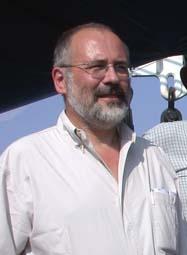
Philippe Bouchet is a French biologist whose primary scientific fields of study are malacology and taxonomy. He works at the Muséum National d'Histoire Naturelle in Paris. He is also a Commissioner of the International Commission on Zoological Nomenclature.
MarBEF Data System was a project of the European Union's Network of Excellence which served as a platform to integrate and disseminate knowledge and expertise on marine biodiversity, with informative links to researchers, industry, stakeholders and the general public. The program was funded by the EU and formally ended in 2009. The data system's online Register of Resources (RoR) includes the details of over 1,000 European marine biology experts and their affiliated institutions and publications.

Angelika Brandt is the world leader in Antarctic deep-sea biodiversity and has developed, organised and led several oceanographic expeditions to Antarctica, notably the series of ANDEEP cruises, which have contributed significantly to Antarctica and deep-sea biology. Brandt was the senior scientist of ANDEEP which was devoted entirely to benthic research in the Antarctic abyss.

Katrin Linse is a German marine biologist, best known for her work on discovering new Antarctic and deep sea species.

John Frederick Matthews ("Fred") Grassle was an American marine biologist, oceanographer, professor, and distinguished research scientist, notable for early work on the communities associated with deep-sea hydrothermal vents, and for his involvement in the creation of the Census of Marine Life and the first integration of marine biological data on a global scale, the Ocean Biogeographic Information System.

Imants (Monty) George Priede is a British-Latvian zoologist, author and academic. He is Professor Emeritus in the University of Aberdeen, Scotland known for his work on fish and life in the deep sea.
References
- ↑ "CeDAMar on COML". Archived from the original on 2010-09-26. Retrieved 2010-09-24.
- ↑ "Census of the Diversity of Abyssal Marine Life (CeDAMar) - Welcome to the deep sea! - Participating Institutes". Archived from the original on 2011-04-25. Retrieved 2010-09-24.
- ↑ "CeDAMar". Archived from the original on 2010-09-14. Retrieved 2010-09-24.